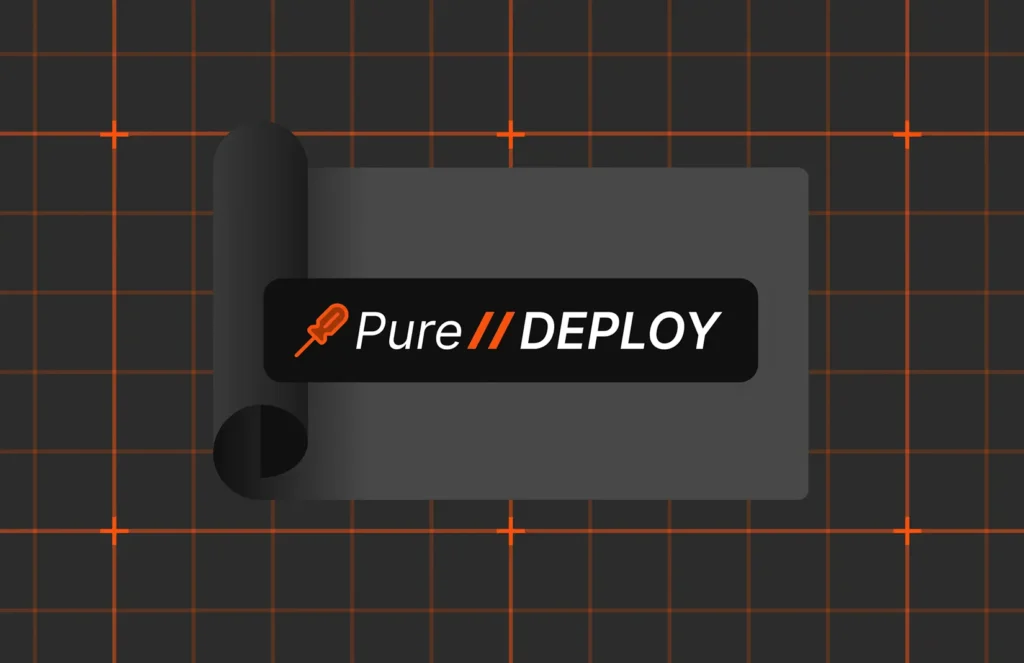Summary
Advanced metering infrastructures (AMIs) collect and analyze data that utility companies use to improve efficiency, system performance, and customer experiences.
As climate change puts energy security at risk, utility companies around the world are turning to new technologies to drive efficiencies while also keeping up with customer expectations. This includes smart grid initiatives that allow the collection and exchange of information between utility companies, energy suppliers, and customers. Advanced metering infrastructures (AMIs) are growing in importance and proving vital in balancing load and mitigating congestion on the grid in light of increased electric vehicle (EV) adoption.
AMIs are systems that measure, collect, and analyze energy usage and communicate with metering devices, including household electricity meters, both on request and on a schedule. AMI implementation provides utility providers with real-time data about power consumption while also giving customers information about their energy used based on the current price.
To deliver on the promise of this innovation, IT teams have a mountain of data to contend with and storage platforms will play a critical role.
AMI Data Drives the Grids of Far West Texas
In El Paso, Texas, where temperatures frequently reach the triple digits in the summer months, a reliable grid can actually save lives. Extreme heat is an ongoing challenge for El Paso Electric (EPE), tasked with meeting escalating demands for power in a cost-effective way as it continues its focus on producing cleaner electricity. The utility provides generation, transmission, and distribution services from southern New Mexico to west Texas.
While utilities like EPE generate and distribute power, they also must pay for their use of it. Yet utility grids are often decades old, unable to handle modern energy demands or the integration of renewable energy sources. Aging infrastructure also requires more frequent maintenance, which can lead to inefficiencies and power losses. All of these limitations increase costs.
Upgrading infrastructure to improve efficiency presents challenges, but the results set up utilities for long-term viability and growth, as EPE is finding with AMI servers.
AMI servers and smart meters enable electric utilities to monitor, manage, and optimize energy usage more effectively, with significant improvements over traditional metering systems. They not only reduce costs and improve service reliability but also support the transition to more sustainable and low-carbon energy systems. Unlike traditional meters that simply record electricity usage, AMIs generate a wealth of data:
- Consumption data: Details on energy usage patterns at different times of the day, help identify peak periods and potential areas for energy savings.
- Power quality data: Information about voltage, current, and frequency helps assess the quality of the power being delivered to consumers.
- Outage data: Real-time updates on power outages and service interruptions facilitate quicker response times and improved reliability.
- Operational data: Data reveals aspects of utilities, including network performance, equipment status, and system health metrics.
For EPE, the data has been especially helpful for forecasting and capacity planning. It gives the utility critical insight to improve optimization of energy generation, plan better for a new generation of resources, and reduce the need for overproduction. AMI offers a lot of innovation around sensor data, which also helps EPE use it to operate more efficiently.
Other business and operational uses for the AMI data include:
- Customer support and service restoration: AMI systems immediately detect outages and verify when service is restored, enabling utilities to respond more quickly and accurately, improving reliability and customer satisfaction.
- Remote service disconnects and reconnects: Reduces the need for manual interventions and enables faster service delivery.
- Automated net metering: Calculates the difference between energy produced and consumed to facilitate the integration of renewable energy sources, like solar panels into the grid.
- Real-time communications with customers: Sends messages to consumers about demand response events and encourages reduced usage during peak times to help stabilize the grid.
- Remote monitoring of distribution equipment: Remotely interrogates, monitors, and controls distribution equipment, enhancing the efficiency of grid operations and reducing the likelihood of faults.
- Prepaid metering: Lets consumers pay for electricity in advance and manage their consumption more effectively.
- Regulatory and compliance requirements: Utilities retain AMI data to comply with regulatory requirements and support analytics.
How EPE Manages the Challenges of AMI Data
AMIs have become the lifeblood of energy-efficient, forward-looking utility providers with their sights set on net-zero goals. But, like most data-forward projects, there are challenges for IT to overcome.
EPE covers a large service area. And the region is growing rapidly with major employers moving in and adding to energy demands on its grid. As part of EPE modernization efforts, the utility recently launched its own smart meter project. With 460,000 customers across a 10,000 square-mile territory and high summer temperatures, it hasn’t taken long for the data to pile up.
As Nick Prieto, Data Center Operations Supervisor at El Paso Electric, said in a recent webinar: “We’re currently deploying our AMI smart meters, and we’re about 50% done in our service territory. What we quickly realized is that AMI data grows every 5 to 15 minutes. On average, we get about 10 billion rows of AMI data a month. That equals about 20 terabytes.”
Rack space requirements also add up, which translates to energy costs in the data center, too. Powerful, efficient storage can dramatically lower energy bills. In the age of AI and meeting net-zero goals, it’s essential to be efficient and consume as little power as possible.
AMI systems demand significant bandwidth not only to transmit metering and power quality information but also to support demand response, load management, and distribution automation functions. Ensuring adequate bandwidth and broadcast capabilities is critical for seamless data transmission and system performance.
Empowering Utility Companies on a Simple Performant Data Platform
In the evolving landscape of utility management, utility companies need robust solutions to effectively manage, store, and capitalize on AMI data.
First, there’s managing the volume, as EPE experienced. Advanced deduplication capabilities reduce storage requirements, cutting down costs and enabling utility companies to store and process more data that can be used in other ways.
“The way Pure Storage has been handling the deduplication has been great. Pure gets it down to about four terabytes, so we’re definitely saving a lot of money on that,” Prieto said.
There’s another side to the efficiency story that’s more familiar—data center power and cooling. Because it significantly reduces storage needs and rack space, Pure Storage enables utilities to retain more data than traditional storage solutions on a smaller footprint.
“Our old storage solution took up about two racks,” Prieto said. “With Pure, we’re down to only about half a rack.”
Freeing up all that space, and eliminating infrastructure that has to be powered up and paid for, gives teams in any industry new physical and financial room for other types of growth and projects they can take on, such as cybersecurity. That power savings can be used to optimize home solar systems, for example, and the production of electricity can be returned to the grid.
”Pure supports our utility’s sustainability goals to reduce power, and it has also reduced a lot of physical clutter and cabling,” Prieto adds.
Fast Recovery and Return to Service
In areas such as El Paso where summer heat can be deadly, utilities like EPE must have the fastest possible recovery to get homes and businesses back on line in the case of an outage. That includes the recent arrival of big technology companies that need massive amounts of electricity to run their data centers. Because of that, recovery is typically an extremely stressful process.
Using Pure Storage and improved outage data from AMIs, Prieto shares how EPE testing of its new systems ensures the fastest possible return to service for customers: “Our full backup, a big portion of our main backups, is about 25 terabytes and has been taking hours to complete. We recently ran the full backup and we did 25 terabytes in about 40 minutes, hitting the C-Series.”
Prieto and his team also did an instant VM recovery off the C-Series. That enabled EPE to recover a large amount of VMs very quickly.
“In fact, our DBAs asked if something was wrong because backups were twice as fast and just as accurate,” he said.
The Right Technology for a Modern Utility Grid
As utilities continue to modernize their grids and incorporate more renewable energy sources, the role of AMI servers in driving energy efficiency will only become more important. Pure Storage offers truly agile, non-disruptive data storage that ensures uptime of critical AMI data systems at all times.
Keeping things simple is important when managing limited resources. ”Always-on” data gave EPE the simplicity it needed to get up to speed on its new Pure Storage infrastructure and simplicity for upgrades, as well.
“The complexity of other storage products has a pretty steep learning curve, but when we installed Pure, we decided to give everybody access to this because there’s really nothing to it,” says Prieto. “Having our team able to do the same tasks without hiring special storage administrators was a really good selling point.”
Learn how Pure Storage can help you save money with greater data center efficiency.

The Innovation Race
Reducing Risk and Navigating the AI Frontier for Future Success
A Brighter Future
Learn how Pure Storage can help you reduce costs and your data center footprint.







